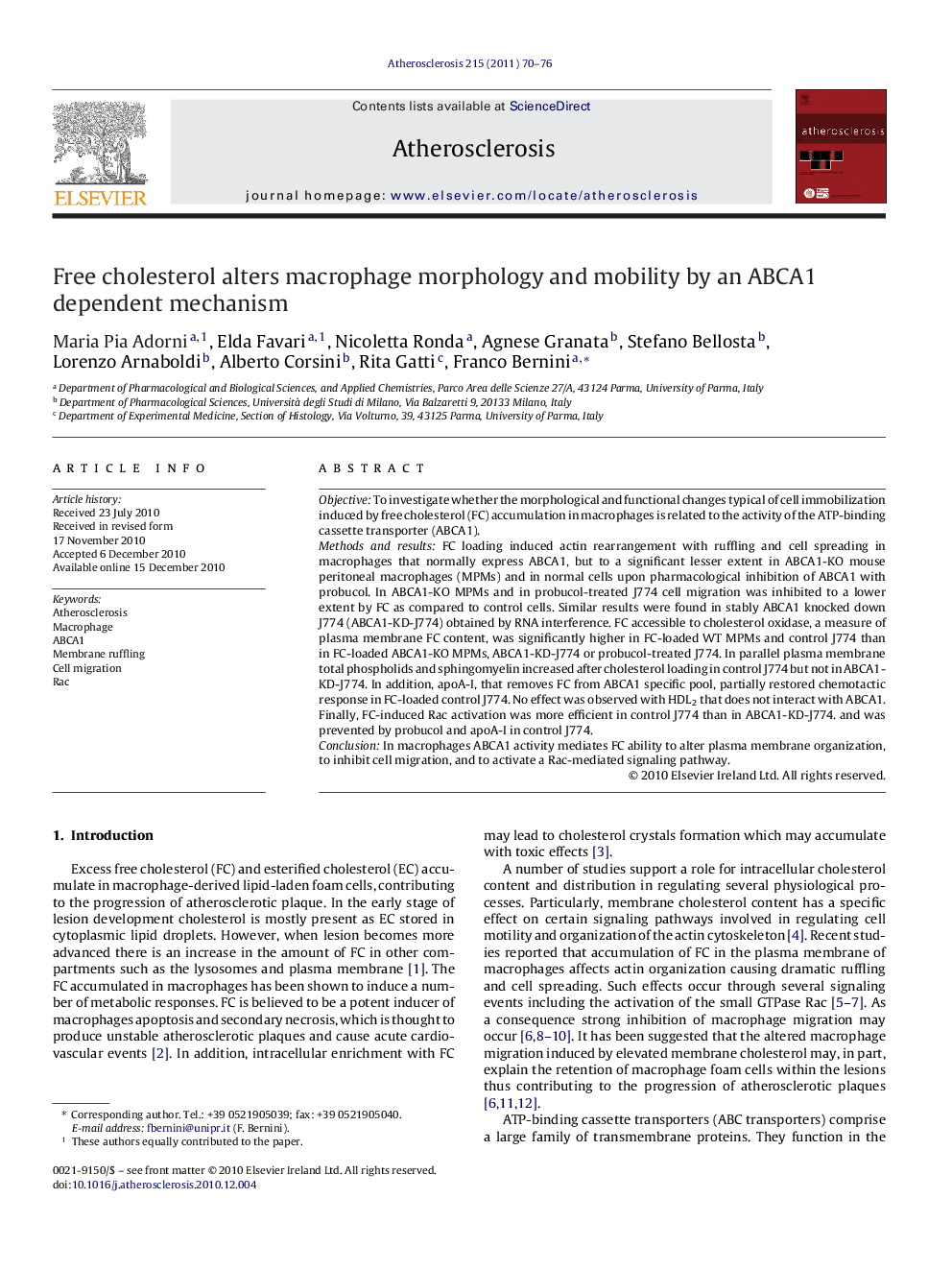| Article ID | Journal | Published Year | Pages | File Type |
|---|---|---|---|---|
| 2892888 | Atherosclerosis | 2011 | 7 Pages |
ObjectiveTo investigate whether the morphological and functional changes typical of cell immobilization induced by free cholesterol (FC) accumulation in macrophages is related to the activity of the ATP-binding cassette transporter (ABCA1).Methods and resultsFC loading induced actin rearrangement with ruffling and cell spreading in macrophages that normally express ABCA1, but to a significant lesser extent in ABCA1-KO mouse peritoneal macrophages (MPMs) and in normal cells upon pharmacological inhibition of ABCA1 with probucol. In ABCA1-KO MPMs and in probucol-treated J774 cell migration was inhibited to a lower extent by FC as compared to control cells. Similar results were found in stably ABCA1 knocked down J774 (ABCA1-KD-J774) obtained by RNA interference. FC accessible to cholesterol oxidase, a measure of plasma membrane FC content, was significantly higher in FC-loaded WT MPMs and control J774 than in FC-loaded ABCA1-KO MPMs, ABCA1-KD-J774 or probucol-treated J774. In parallel plasma membrane total phospholids and sphingomyelin increased after cholesterol loading in control J774 but not in ABCA1-KD-J774. In addition, apoA-I, that removes FC from ABCA1 specific pool, partially restored chemotactic response in FC-loaded control J774. No effect was observed with HDL2 that does not interact with ABCA1. Finally, FC-induced Rac activation was more efficient in control J774 than in ABCA1-KD-J774. and was prevented by probucol and apoA-I in control J774.ConclusionIn macrophages ABCA1 activity mediates FC ability to alter plasma membrane organization, to inhibit cell migration, and to activate a Rac-mediated signaling pathway.
